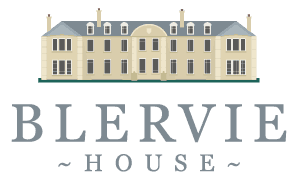M is for Military Roads and Museums in Scotland. When you stay with us at Blervie House, work your way through our A-Z of suggested activities.
Military Road
Travelling today in Scotland inevitably means touring some of the most beautiful roads you can imagine. It also means being immersed in living history. That is certainly the case when you drive The Snow Roads. This spectacular road is a 90-mile route between Blairgowrie and Granton-on-Spey. Most definitely my favourite way if I am moving to or from Edinburgh.
You will follow part of Scotland’s Military Road network as you travel. Often referred to as General Wade’s Military Roads, you can find many military roads throughout Scotland. The then British Government commissioned these roads after 1715 Jacobite rising to suppress and control the local Highland population by increasing the supply chain to establish military forts and barracks.
General Wade built the original route east of Braemar. It crosses the river at Invercauld Bridge and continues to a point opposite Balmoral Castle. This section of the A93 is what you will see labelled Old Military Road on your map today.
From Crathie, the road continues northwards via the original Bridge of Gairn to Corgarff Castle. You might need to ask my husband for his Gairnshiel Bridge story!

This is the point to stop at The Watchers and admire the scenery. Just imagine the history this route has seen. The castle resulted from the government purchase in 1746 and subsequent fortification of one of the Earl of Mar’s hunting lodges. It was part of an attempt to reduce cattle-rustling incidence in the area.

Today’s road continues northwards over the Lecht pass and Tomintoul on virtually the same route initially designed by General Wade. B yond Grantown-on-Spey, the road ran north and west, crossing the powerful River Findhorn at Dulsie Bridge. T e end of the route was the Military Fort at Fort George, just outside Inverness.
So, if you are travelling the Snow Roads, you will follow General Wade’s Military routes and are part of Scotland’s living history, so imagine those who have gone before you.
Then if you are in Carrbridge, take the time to enjoy the walk around Dulsie Bridge on the road to Cawdor Castle. A mire this feat of engineering would be some achievement today, let alone 300 years ago.
More recent Military History is easily visible on our stunning beaches, with unused barriers and watchpoints visible. I would always recommend a trip to the Orkney Islands to see the Churchill Barriers in place. The barriers’ effects are producing beautiful beaches and easier access for road traffic.
Museums in Moray
Moray offers so much to do for an outdoors person sometimes. It is hard to drag oneself to visit a museum. However, here are two worth making time to visit. We have a choice of excellent Museums in Moray. Some are attached to Visitor attractions and are still in use today. However, here are two that are close to us that I can recommend:
Elgin Museum is Scotland’s oldest independent Museum. The Museum tells Moray’s story from the arrival of people in the area around 800 C to the Picts (3rd – 9th Centuries AD).
This part of Mor y has a rich heritage left to us by the Picts, and the Museum is an excellent place to start learning about their lives. As you drive and walk around the County, you will find more and more evidence of their settlements. The Burghead Bulls are an excellent place to start. Don’t forget to check out Sueno’s Stone after your visit. The proof of the practice of beheadings during the Iron Age period is another reminder that Scotland has a lot of history!
And moving on to more recent times, we have the excellent:
Morayvia – Moray’s award-winning Sci-Tech Project. Your chance to get close to several RAF, Search and Rescue aircraft, and helicopters. Check out a Cockpit. Chat with experienced aircraft engineers to find out how these machines work. The Museum is a truly unique opportunity to experience these aircraft.


